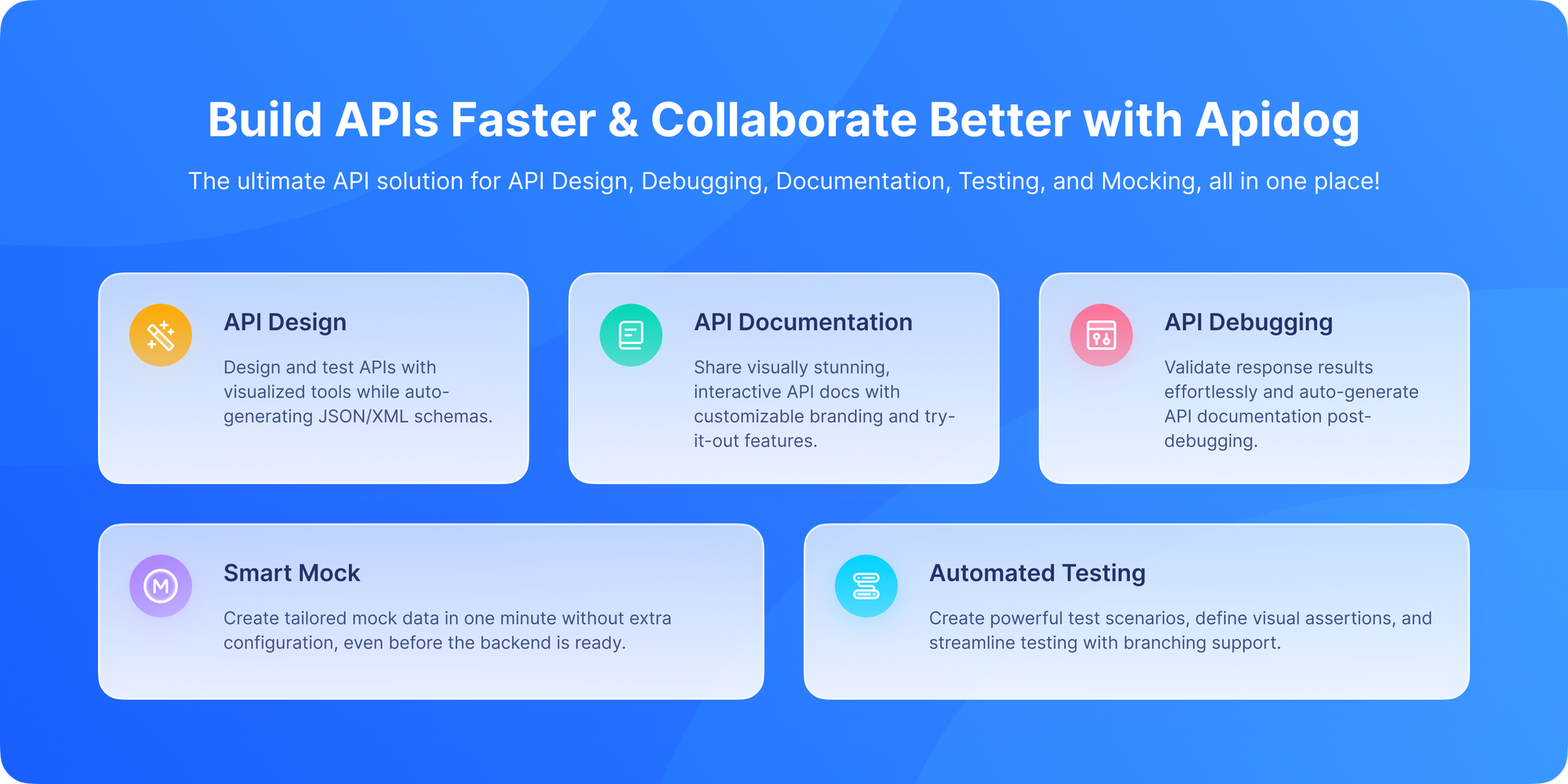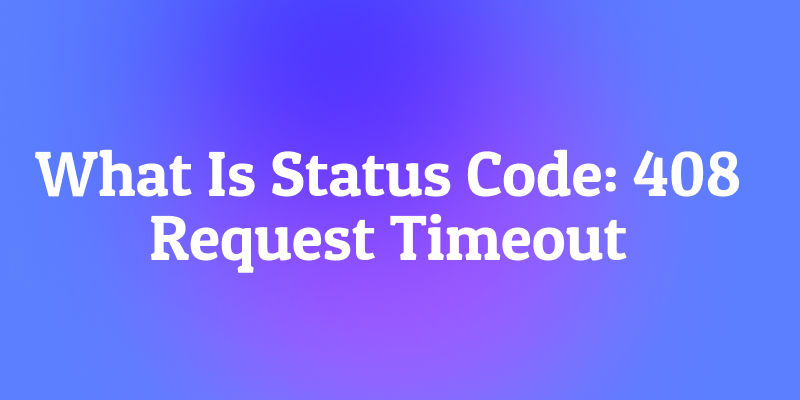You're uploading a large file to a cloud service. The progress bar creeps along slowly, and then suddenly everything stops. You get an error message: "Request Timeout." Meanwhile, on the other end, the server has been sitting there, tapping its fingers, waiting for your data to finally arrive. After a while, it gives up and closes the connection.
This frustrating experience is the realm of the 408 Request Timeout HTTP status code. Unlike many other error codes that focus on the content of the request, this 408 is all about timing. It's the server's way of saying, "I was willing to listen to you, but you took too long to speak."
Think of it like a customer service call where you put the agent on hold for 10 minutes. Eventually, they'll hang up. They're not rejecting you personally; they're just following their policy about how long they can wait for a response.
If you're dealing with slow networks, large file uploads, or building APIs that need to protect themselves from slow clients, understanding the 408 status code is essential.
In this deep dive, we'll explain everything you need to know about the 408 Request Timeout status code: what it means, why it happens, how it impacts users and servers, and best practices for handling and preventing it. Debugging timeouts manually can be painful if you want to easily test your APIs' timeout behaviors and better understand HTTP responses like 408.
Now, let's explore what causes request timeouts and how to deal with them.
The Problem: The Impatient Listener
In the ideal world of HTTP, conversations are quick and efficient:
- Client: "Here's my request!"
- Server: "Here's my response!"
But what happens when step 1 takes too long? The server has limited resources—it can't keep connections open indefinitely waiting for slow clients to finish sending their requests. This is particularly important for servers handling thousands of concurrent connections.
The 408 Request Timeout is the server's defense mechanism against clients that start a request but then fail to complete it in a reasonable timeframe.
What Does HTTP 408 Request Timeout Actually Mean?
At its essence, The 408 Request Timeout status code indicates that the server did not receive a complete request message within the time that it was prepared to wait.
The key insight here is that this error happens during the request phase, not during processing. The server isn't taking too long to think about your request; it's saying you took too long to make your request.
A typical 408 response looks like this:
HTTP/1.1 408 Request TimeoutContent-Type: text/htmlConnection: close
<html><head><title>408 Request Timeout</title></head><body><center><h1>408 Request Timeout</h1></center></body></html>
Notice the Connection: close header? This tells the client that the server is closing the connection. The client will need to establish a new connection if it wants to retry the request. In simpler terms, the client took too long to send the request, and the server decided to give up and close the connection.
In an everyday analogy: imagine you're ordering a coffee at a café, but you stop halfway through your order and don’t finish. Eventually, the barista stops waiting, assuming you left. Similarly, if a client fails to send the full HTTP request quickly enough, the server stops waiting and signals a timeout.
Why 408 Request Timeout Matters
You might think: "It's just a timeout, no big deal."
But in production environments, timeouts directly affect user experience and API reliability.
For example:
- A mobile app that times out frequently can frustrate users and lead to uninstalls.
- An API gateway with improper timeout handling can break integrations.
- Even a few milliseconds’ delay at scale can mean lost conversions in e-commerce.
The Mechanics: How Request Timeouts Happen
Let's walk through what actually occurs when a 408 error is generated.
Scenario: Uploading a Large File
- The Connection: Your client establishes a TCP connection with the server and starts sending a POST request with a large file attachment.
- The Server's Timer Starts: The server has a configuration setting (often called
client_header_timeoutorrequest_timeout) that defines how long it will wait to receive the complete request. This timer starts the moment the connection is established. - Network Issues Occur: Maybe your Wi-Fi signal drops, your mobile data connection becomes unstable, or there's general network congestion. The data transfer slows to a crawl or stops entirely.
- The Timer Expires: The server's timeout period (commonly 30-60 seconds) elapses before it receives the complete request headers and body.
- The 408 Response: The server gives up, sends a
408 Request Timeoutresponse, and closes the connection. - The Client's Dilemma: Your client receives the
408response. The upload has failed, and you'll need to start over.
408 vs. 504: The Critical Difference
This is the most important distinction to understand, as these two timeout errors are often confused.
408 Request Timeout: The client was too slow. The server didn't receive the complete request within its allotted time. This happens before the server starts processing the request.- Analogy: You're too slow ordering at a drive-through, and they close the window.
504 Gateway Timeout: The server (or an upstream server) was too slow. The server received the complete request and forwarded it to another service (like a database or backend API), but that service took too long to respond.- Analogy: You place your order successfully, but the kitchen is too slow preparing it.
The simple rule:
408= Problem with the request transmission504= Problem with the response generation
Common Causes of 408 Errors
Understanding what causes timeouts helps you prevent them.
1. Unstable Network Connections
This is the most common cause. Poor Wi-Fi, spotty mobile data, or general internet congestion can dramatically slow down data transfer, causing the request to exceed the server's timeout window.
2. Huge File Uploads on Slow Connections
If you're trying to upload a 2GB file on a connection that only supports 1Mbps upload speed, the math simply doesn't work out. The transfer will take nearly 5 hours, but most servers won't wait that long.
3. Server Configuration Issues
Overly aggressive timeout settings on the server can cause legitimate requests to timeout. A 10-second timeout might be reasonable for API calls but completely impractical for large file uploads.
4. Client-Side Issues
The client application might be slow to generate or send the request data due to:
- Limited processing power on mobile devices
- Background processes consuming resources
- Bugs in the client code that delay request transmission
5. Network Equipment Problems
Routers, firewalls, or proxies between the client and server might introduce delays or drop packets, leading to incomplete request transmission.
The server sets a timeout duration based on configuration, and if the request isn’t received in time, it returns 408 instead of waiting indefinitely.
How Can Users Handle 408 Errors?
As a user, if you encounter 408:
- Retry the request: Sometimes network hiccups cause delays, and a retry helps.
- Check your internet connection: Slow or spotty connections can lead to incomplete requests.
- Reduce request size: Avoid very large requests when possible.
- Avoid interruptions: Don’t close or interrupt network requests prematurely.
Patience and stable connections often resolve 408 errors for users.
How Should Developers Handle 408 Request Timeout?
Developers have several strategies:
- Set appropriate server timeout thresholds: Balance patience with resource conservation.
- Optimize client requests: Send requests promptly and avoid unnecessary delays.
- Use keep-alive connections judiciously: To prevent premature closure.
- Implement retries and backoff logic: Especially in flaky network conditions.
- Return helpful error messages: Guide clients on retry behavior.
- Log and monitor 408 occurrences: Pinpoint network or server-side bottlenecks.
Testing and Debugging with Apidog

Timeout issues can be notoriously difficult to debug because they're often intermittent and environment-specific. Apidog is an end-to-end API development platform designed for modern developers. It provides powerful features to help you test and understand timeout behavior. Testing timeout behaviors manually can be tedious.
With Apidog, you can:
- Simulate Slow Requests: Use Apidog to deliberately send requests slowly or in chunks to see how your server responds. This helps you determine your server's actual timeout thresholds.
- Test Different Payload Sizes: Experiment with different request body sizes to find the limits of your server's patience.
- Monitor Timing Information: Apidog provides detailed timing metrics for each request, helping you identify if certain endpoints are consistently slow.
- Validate Error Handling: Ensure your application correctly handles
408responses from third-party APIs and has appropriate retry logic. - Test Under Various Conditions: Create test scenarios that simulate different network conditions to ensure your application behaves gracefully under adverse circumstances.
This proactive testing can help you identify timeout issues before they affect your users in production. Seriously, if you're debugging timeouts often, download Apidog for free and save yourself hours of manual testing to simplify 408 and other timeout testing.
Real-world Examples of 408 Errors
- Mobile apps experiencing intermittent connectivity may frequently trigger 408 errors during API calls.
- IoT devices sending data over unstable networks can face request timeouts.
- Web browsers behind slow proxies might see 408 if the proxy delays request forwarding.
Understanding your use case aids in optimizing timeout settings accordingly.
Difference Between 408 and Connection Timeout
It's also worth distinguishing between 408 Request Timeout and network-level connection timeouts.
- 408 Request Timeout: The server closes the connection waiting for a complete request.
- Connection Timeout: The client fails to establish a TCP connection to the server within a specified period.
Both affect user experience differently and need different troubleshooting approaches.
How Different Servers Handle 408
Various web servers have their default timeout settings:
- Apache: Defaults to 300 seconds for request completion.
- Nginx: Uses
client_header_timeoutand other directives. - IIS: Similar client request timeout configurations.
Adjusting these settings affects how long servers wait before issuing 408.
Security Implications
Sometimes, timeouts are intentionally set short to mitigate Slowloris attacks where a malicious client keeps a connection open indefinitely by sending partial requests.
By enforcing reasonable timeout values, you protect your servers from resource exhaustion.
Performance Optimization Tips
Here are ways to prevent 408s proactively:
- Optimize network requests (use HTTP/2 or keep-alive).
- Compress payloads.
- Implement retry strategies with exponential backoff.
- Use CDN caching to reduce client-server roundtrips.
- Monitor API health with tools like Apidog to track slow endpoints in real time.
408 and User Experience
From a user's perspective, timeouts are frustrating.
That's why your UI should handle them gracefully:
- Show a friendly error message, not just "408 Request Timeout."
- Offer a retry button.
- Provide feedback like "This might be due to a slow network."
Users appreciate when systems fail gracefully.
SEO Implications
If your public site (not just APIs) responds with 408 frequently, search engines may interpret it as poor availability.
Over time, that can harm SEO rankings because crawlers stop trying to index pages that consistently timeout.
So fixing 408s isn't just about tech, it's about maintaining online visibility, too.
Solutions and Best Practices
For Server Administrators:
- Adjust Timeout Settings: Increase timeout limits for endpoints that handle large file uploads or slow operations. In Nginx, this might be
client_header_timeoutandclient_body_timeout. In Apache, it'sTimeOut. - Implement Progress Tracking: For file uploads, provide progress feedback so clients know the transfer is still active.
- Use Chunked Transfer Encoding: This allows clients to send large requests in pieces, which can help avoid timeouts.
- Set Realistic Limits: Balance protection against slow clients with the legitimate needs of your users.
For Application Developers:
- Implement Retry Logic: When you receive a
408, implement intelligent retry mechanisms with exponential backoff. - Provide User Feedback: Show progress indicators for long operations so users know the system is working.
- Optimize Request Size: Break large requests into smaller chunks when possible.
- Check Network Conditions: On mobile apps, check network quality before attempting large transfers.
For End Users:
- Check Your Connection: Verify you have a stable internet connection.
- Try a Wired Connection: If on Wi-Fi, try Ethernet for large uploads.
- Reduce File Size: Compress files or break them into smaller parts.
- Try During Off-Peak Hours: Network congestion might be causing the issue.
The Protocol-Level Details
It's worth noting that in practice, you might not always see a proper 408 response. Sometimes the server will simply close the TCP connection without sending any response. Other times, you might see a different error if the timeout occurs at a different layer (like a TCP timeout).
The 408 is the HTTP-level way for a server to politely say "you're too slow" before closing the connection.
Conclusion: Why Understanding 408 Request Timeout Benefits Everyone
The HTTP 408 Request Timeout status code represents the constant tension in networked systems between patience and resource management. The HTTP 408 Request Timeout error is one of those sneaky issues that can appear harmless but has deep implications for performance, reliability, and user trust. Servers can't wait forever, but users need enough time to complete their requests.
The key takeaway?
A timeout isn’t just a random glitch it's a signal. It tells you something in your communication chain isn’t keeping up, whether that’s a slow client, a strict server setting, or a flaky network.
Understanding this balance and knowing how to distinguish 408 from other timeout-related errors is crucial for building robust applications that work well in real-world conditions where network quality varies dramatically.
By implementing proper timeout handling, providing good user feedback, and testing your applications under adverse conditions, you can minimize the frustration of timeout errors for your users. And when you need to test how your applications handle these timing challenges, a tool like Apidog gives you the control and visibility needed to ensure your timeout handling is as robust as the rest of your application.
So next time your console says 408 Request Timeout, don't panic. You'll know exactly what's going on and how to fix it.



